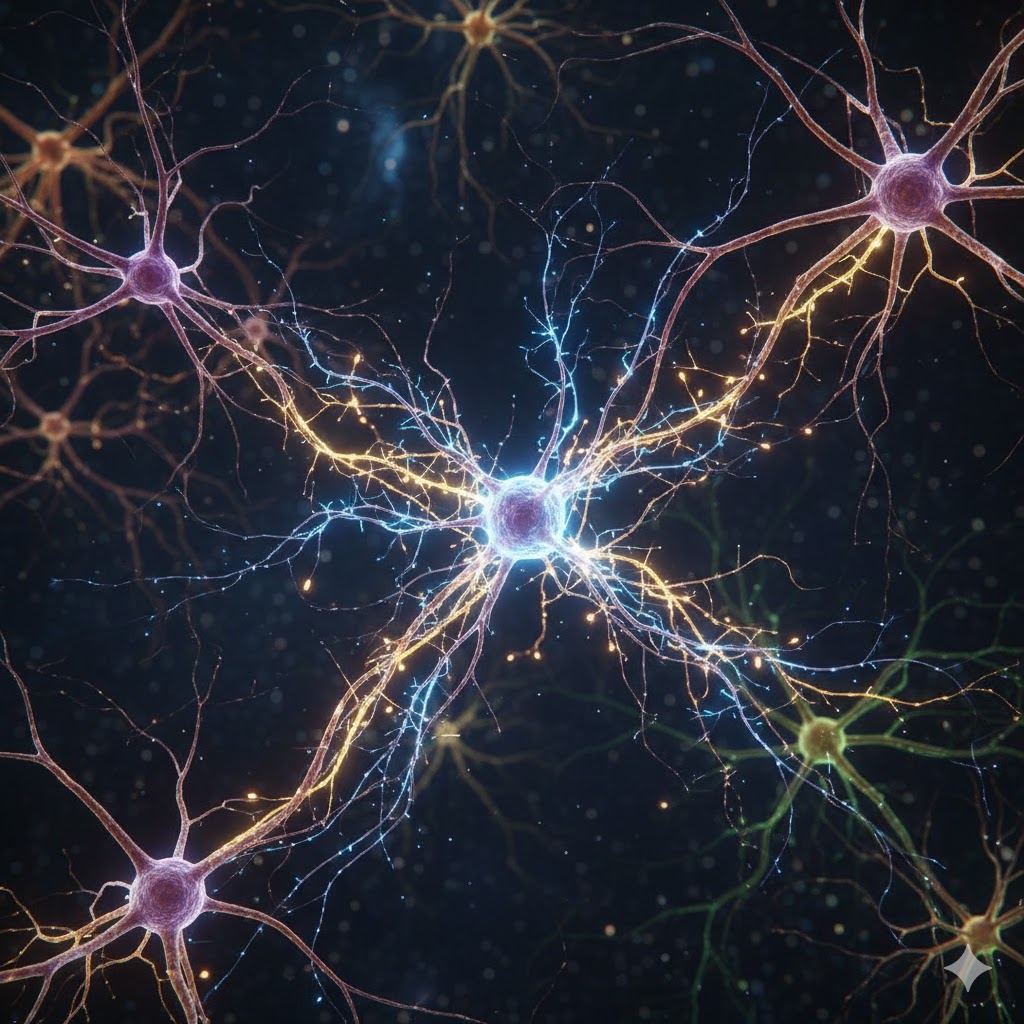In recent years, neuroscience has entered an unexpected conversation: hair loss. While genetics, hormones, and nutrition are well-known contributors, researchers are beginning to ask a new question — can the brain itself influence hair regrowth? The emerging field of neuroplasticity — the brain’s ability to reorganize and form new neural connections — suggests that the relationship between mind and follicle health might be more profound than previously imagined.
At ZMD Hair, we’ve always believed that true restoration goes beyond surface treatment. Understanding the link between the nervous system and follicle recovery may open new, integrative approaches to treating hair loss — particularly stress-induced and psychosomatic forms of alopecia.
Understanding Neuroplasticity: The Brain’s Power to Rewire
Neuroplasticity refers to the brain’s ability to adapt by forming new neural pathways. It’s how we learn new skills, recover from injury, and reshape behavioral responses. But what does this have to do with hair follicles?
The human scalp isn’t an isolated biological zone — it’s an extension of the nervous system. Each hair follicle is surrounded by a dense network of sensory nerves, which communicate with the brain through electrochemical signals. These connections regulate local blood flow, inflammatory responses, and even hormonal activity around the follicle.
When chronic stress, trauma, or prolonged anxiety disrupts these neural signals, it can trigger or worsen conditions like telogen effluvium (stress-induced shedding) or alopecia areata (autoimmune hair loss). Neuroplasticity, in theory, allows for the restoration of balance by retraining these neural pathways to reduce overactive stress responses that harm follicles.
The Brain-Hair Axis: A Two-Way Communication Network
1. Stress and the Hypothalamic-Pituitary-Adrenal (HPA) Axis
When we experience chronic stress, the HPA axis — the body’s central stress response system — becomes overstimulated. This leads to elevated cortisol levels, which constrict blood vessels, limit nutrient delivery to follicles, and trigger inflammation in scalp tissue. Over time, this can push follicles into premature dormancy.
However, neuroplasticity-based therapies like mindfulness meditation, neurofeedback, and cognitive behavioral retraining have been shown to calm the HPA axis, lowering cortisol and improving circulation to peripheral tissues — including the scalp. This physiological improvement can help sustain the follicle’s active growth phase.
2. The Role of the Vagus Nerve and Parasympathetic Activation
The vagus nerve, often called the “mind-body superhighway,” plays a key role in reducing inflammation and maintaining immune balance. Low vagal tone (reduced activity of this nerve) is linked to both chronic stress and autoimmune flare-ups — two major contributors to hair loss.
Practices that enhance neuroplasticity — such as deep breathing, cold exposure, and meditation — can increase vagal tone, potentially reducing the inflammatory attacks that damage follicles in autoimmune hair loss conditions.
How Thoughts and Emotions Influence Hair Growth
Science now recognizes that the emotional state of the brain can have measurable effects on physical systems. Studies on psychodermatology — the intersection of psychology and skin health — reveal that negative emotional states can directly impact skin and hair follicles via neurochemical mediators like substance P, histamine, and cytokines.
A study published in Nature (2021) found that stress depletes melanocyte stem cells in the hair follicle, leading to premature graying and follicle fatigue. When stress was relieved, neural signaling normalized — and in some cases, follicles resumed normal function. This suggests that mental and emotional recalibration may indeed influence follicular recovery.
In other words, how we think and how we heal may be connected at the neural level.
Can Rewiring the Brain Truly Reverse Hair Loss?
While it’s important not to overstate neuroplasticity’s power, evidence is mounting that mental and neural conditioning can support other hair restoration therapies.
At ZMD Hair, we’ve observed that patients who incorporate mindfulness, therapy, or cognitive retraining alongside medical interventions often report faster recovery, less inflammation, and more sustainable results. This may be because neuroplasticity enhances the body’s receptivity to healing by stabilizing the neuroendocrine system.
Integrating Neuroplasticity into Hair Restoration
A truly holistic approach might combine:
- PRP Therapy (Platelet-Rich Plasma): To biologically stimulate dormant follicles.
- LLLT (Low-Level Laser Therapy): To enhance blood flow and cellular energy production.
- Nutritional Optimization: To ensure follicles have the building blocks to regenerate.
- Neuroplasticity Training: To calm the nervous system, balance stress hormones, and reinforce healing pathways between the brain and scalp.
This integration creates a feedback loop — where physical recovery supports mental well-being, and mental calmness supports follicular recovery.
The Emerging Field of Psychotrichology
A new discipline, known as psychotrichology, focuses on the psychological and neurological factors influencing hair health. Experts in this field argue that hair loss shouldn’t only be treated as a dermatological issue but as a neurobiological and emotional condition.
Some findings include:
- People who undergo stress-management or neurofeedback therapy show reduced hair shedding over six months.
- Guided imagery and visualization exercises — particularly those centered on scalp healing — can reduce anxiety-related hair loss.
- Patients who address trauma, grief, or chronic emotional strain often see improved outcomes in otherwise stubborn alopecia cases.
These insights affirm what many clinicians are beginning to observe: the follicle’s survival may depend as much on neural calm as on cellular nutrition.
The Future of Hair Restoration: Mind Meets Medicine
As technology and neuroscience advance, the line between physical and mental treatments continues to blur. Future therapies may include EEG-guided relaxation protocols, biofeedback scalp devices, and even brain-stimulation-assisted hair regrowth treatments that encourage the nervous system to “relearn” healthy follicular patterns.
But while these innovations are still developing, the foundational truth remains clear — the brain’s influence over the body is vast, and nurturing that connection can play a critical role in restoring vitality to the scalp.
Conclusion:
Hair loss is never just skin deep. It reflects a conversation between your biology, your stress, and your nervous system. The science of neuroplasticity reminds us that healing doesn’t always start in the mirror — it often starts in the mind.
At ZMD Hair, we recognize that follicle recovery is not just about what’s happening on your scalp — it’s about what’s happening in your brain, your lifestyle, and your overall balance. Our treatments combine medical precision with modern understanding of neurobiology, giving every patient a personalized path toward regrowth and confidence.
📞 Ready to explore how mind-body balance can transform your hair health?
Visit ZMDHair.com or call today to schedule your private consultation with our specialists.
Let’s restore more than your hair — let’s restore your connection to yourself.




